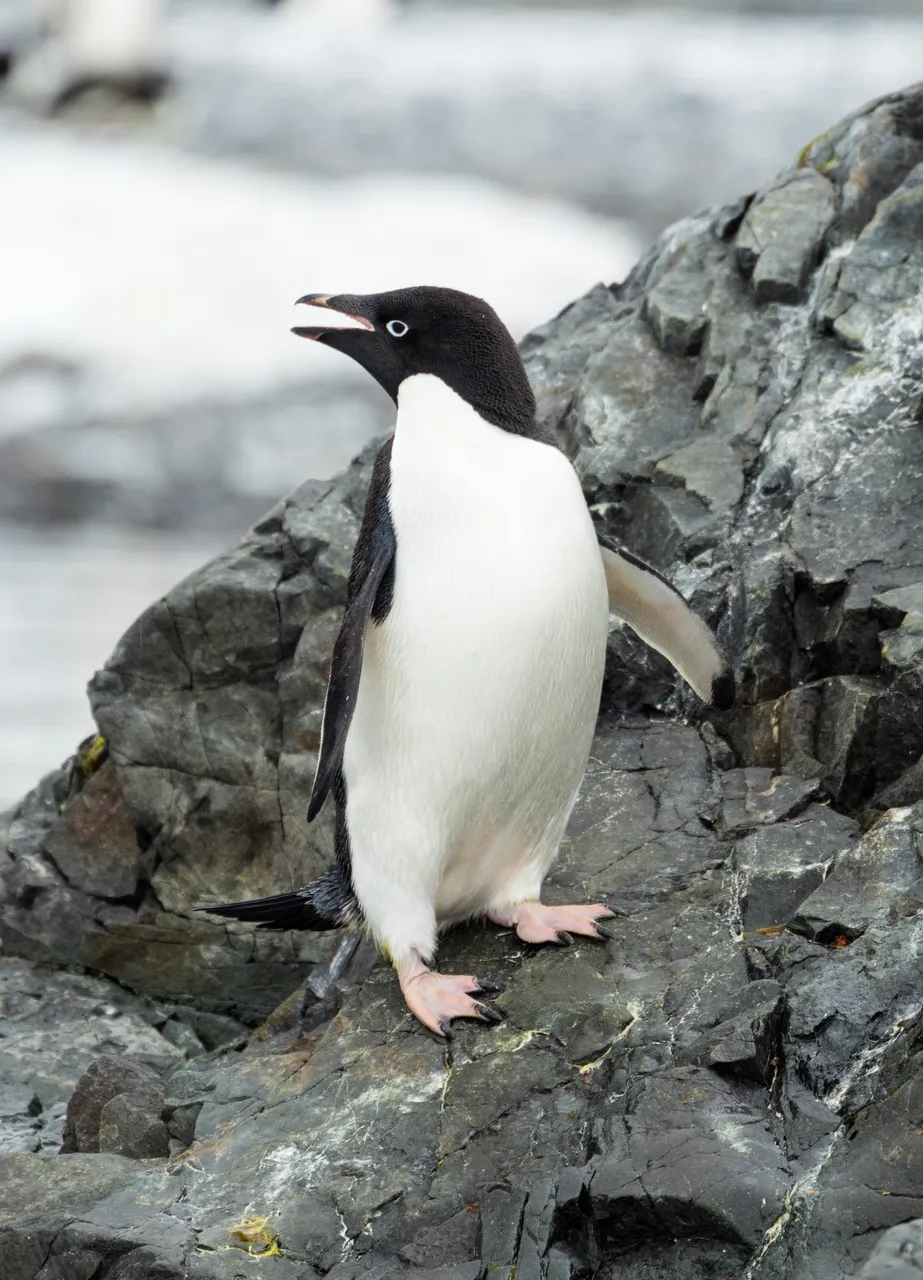The Adélie penguin (Pygoscelis adeliae) is a common penguin species all over the Antarctic coastline, with almost 4 million birds spread out over the entire continent. They are not considered to be endangered, or even anything close to that, but recent news has given rise to concern about the well-being of this penguin species.

An Adélie penguin. Image by Andrew Shiva / Wikipedia / CC BY-SA 4.0.
A scientists employed by the World Wide Fund For Nature (WWF) studied a population of Adélie penguins on Terre Adélie (officially known as Petrels Island), a region with over 18,000 breeding penguin pairs. Their observations of the colony lead to the conclusion that only two chicks survived in the entire population! All the other breeding pairs laid eggs, but either the eggs did not hatch, or the chicks died before they grew old enough to be able to take care of themselves. According to the scientists, dead chicks and unhatched eggs were scattered all over the island!
As you have probably guessed by now, this has an external reason, because such a low survival rate is simply not natural. And you’re right. The reason why most chicks died is expected to be because the ice was so thick that the parents were unable to get into the water. This lead to them being unable to feed the chicks, and they starved to death.
This is sadly not the first time this population has had problems. In 2013 a similar thing happened, but this time not a single chick survived. It’s unsure for how long this population will be able to keep surviving if so few chicks are surviving each year.
Climate change is to blame
A lot of Antarctica is melting, and this is what is causing the problems for the penguins on Terre Adélie as well. The reason why the thick ice won’t let them get to the water is because a nearby glacier broke off, and a piece of the glacier (being the size of Luxembourg) blocked the sea for this penguin population. This has made the penguins having to walk over 100km to reach the sea, and this takes so long that the chicks starve to death.
Next week the Convention on the Conservation of Antarctic Marine Living Resources (CCAMLR) will take place, and at this convention, EU and 25 other countries will meet to discuss solutions to the problems the Antarctic is facing. They obviously won’t be able to stop climate change, but they may be able to provide some solutions to penguins and other marine animals to help them cope with it a bit better.
Thanks for reading!
If you are interested in learning more, check out the press release by WWF regarding the matter!
About the author
Hi, I’m @valth! I live in Norway with my wife, our baby, and our two dogs; one of which is seen wearing a bow tie in the profile picture!
I am very passionate about nature and biology, and have been studying ecology for a few years now. My passions are mostly within conservation biology, mycology (the studies of mushrooms), botany, animal behavior and general microbiology. I really enjoy both the theoretical aspect, as well as the more practical aspect of biology, and I spend about as much time in front of biology textbooks as I do spend on finding and identifying plant, mushroom and animal species in the forests.